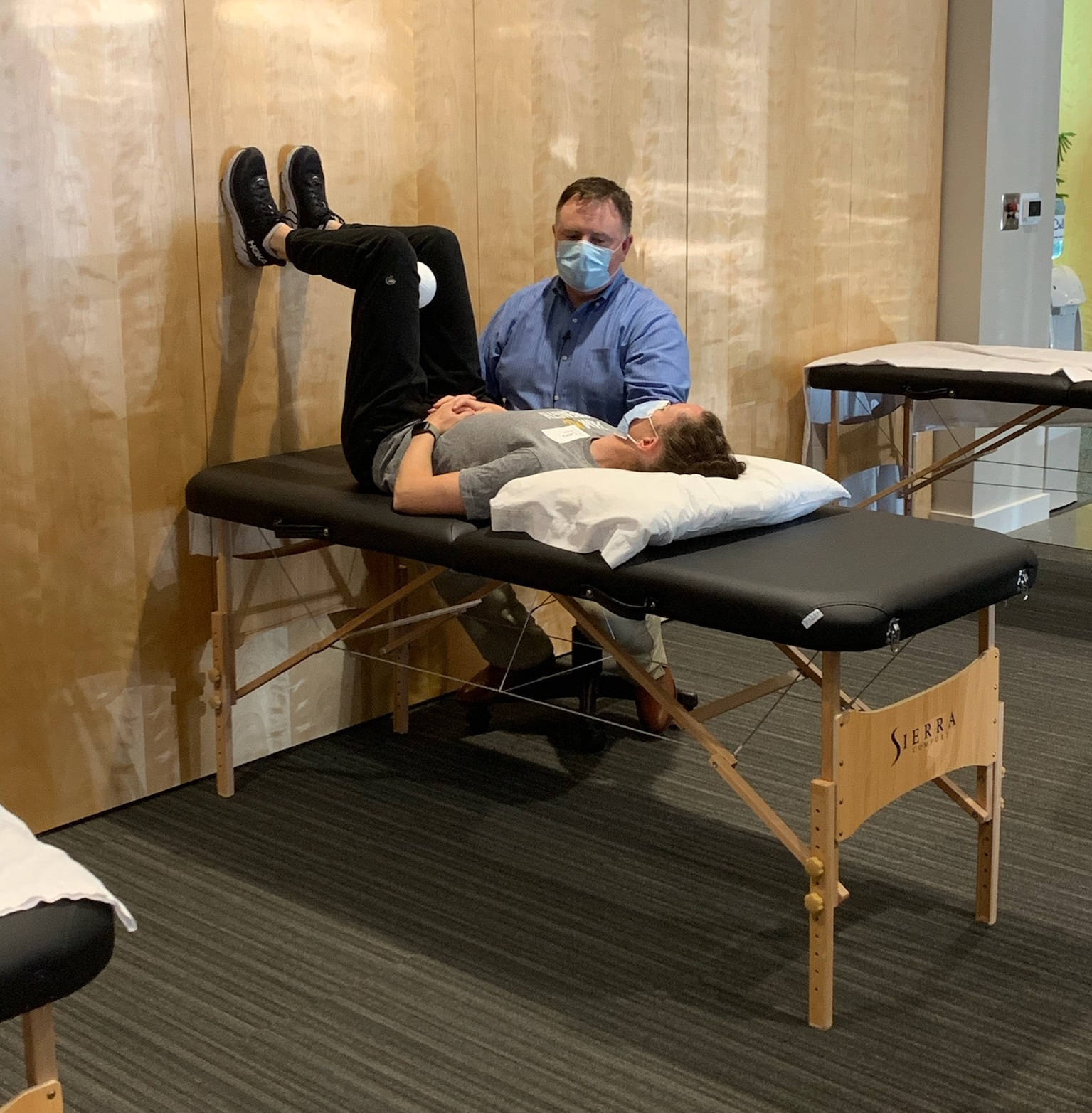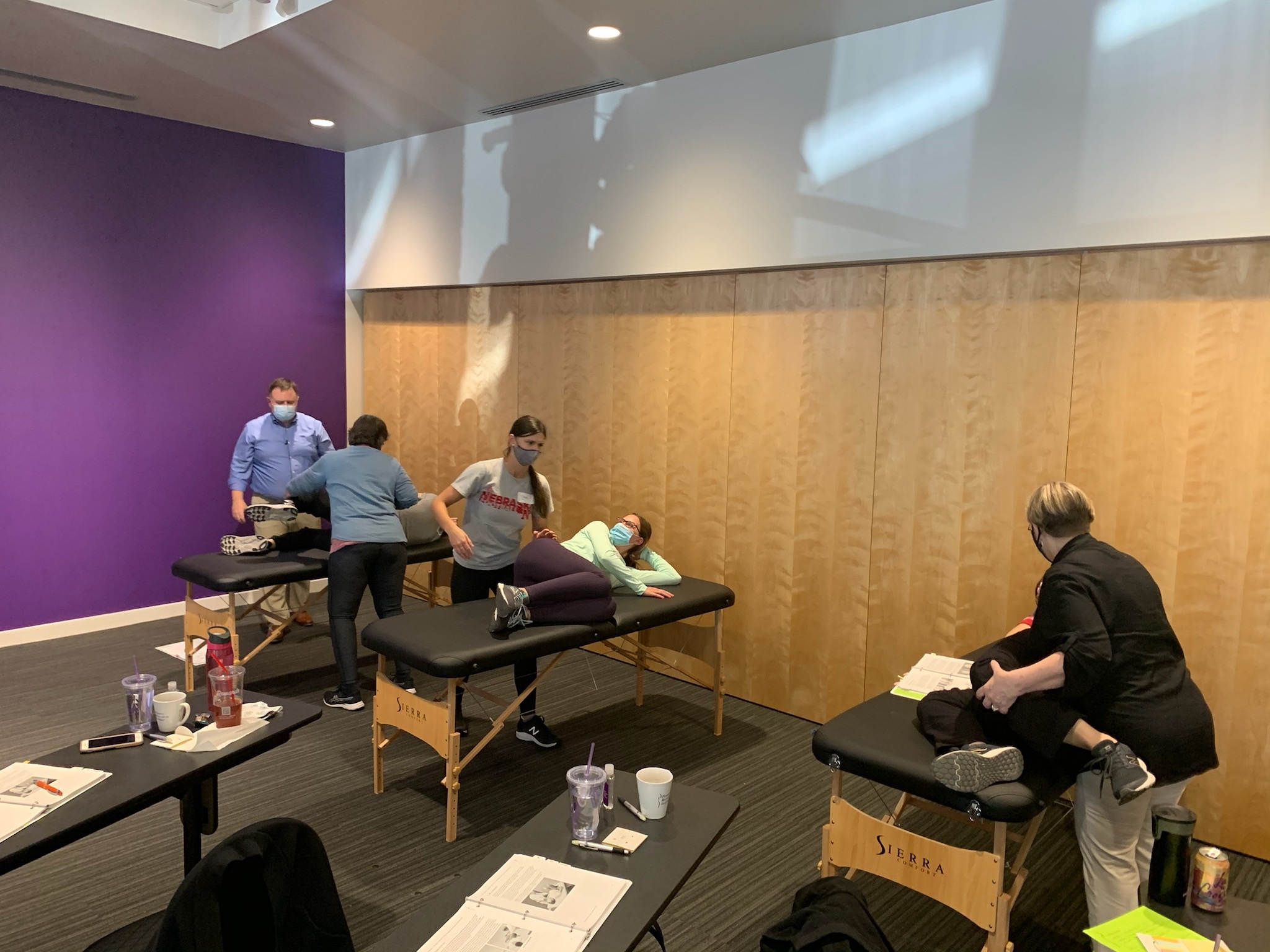The "flagship" course in PRI is Postural Respiration because how and where air enters our body facilitates how the rest of the body performs. This is a very dense course with a lot of research and neurology behind the musculoskeletal ramifications of faulty airflow patterns. The huge advantage this live-stream course provided is the ability of the course attendee to go back and listen to the course material again for two weeks. We were fortunate to have a few in-person attendees as well as many on-line live streaming attendees.
I’ve had the pleasure of teaching via live-stream several times since March of last year. However, this was the first course I’ve taught that had a lab component since November 2019. It was very rewarding and refreshing to have the opportunity to interact with in-person humans again during a PRI course. I have missed the human interaction while teaching PRI. I know that all of the PRI faculty feel the exact same way; Ron probably more than any of us. It was a very enjoyable experience.



We were able to dive deep into the neurological ramifications of human asymmetry, the potential role of dynamic respiration, and the potential negative affects of patterned respiration. Once we were able to fully delve into neurology of respiration, the AIC and BC patterns relative to respiration became a more fluid learning experience. The discussion around the left diaphragm’s need for a team of muscles to assist in its endeavor to perform inhalation as well as the rib and sternal mechanics behind trunk rotation were topics of conversation that provided lively questions and conversation. These conversations permitted a deeper explanation into how and why Superior T4 Syndrome develops, as well as how to assess and manage it.
The goal was to provide the attendee as much information as possible without overwhelming the new-to-PRI attendee. This opportunity is afforded to us by the live-stream event. With time to go back and listen to the information to help digest and understand topics that may be challenging or difficult, we are able to go a little deeper and a little faster into these concepts.

This course is different and has evolved over the last few years. If you haven’t attended Postural Respiration in the past, or haven’t attended in a while, I would recommend finding a way, sooner than later, doing so because of the many upgrades to this "flagship" course.


